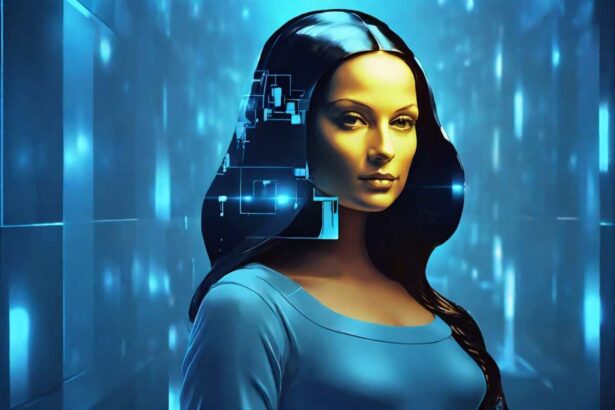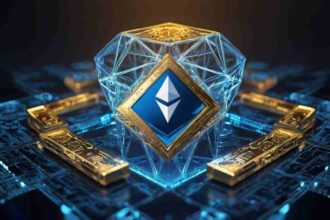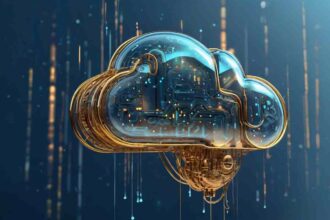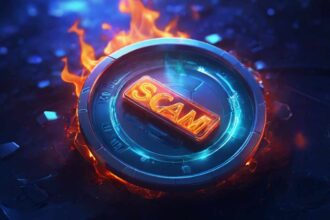With digitalization and virtual reality all around us, the likelihood of digital art becoming mainstream is high. Nevertheless, extensive education is necessary as many believe purchasing an NFT grants them exclusive ownership of an artwork connected to it. There are several issues a potential buyer needs to consider as the reality is far from that.
NFTs are a revolutionary novelty that allows you to own digital originals. Nevertheless, you should always be mindful of what you are buying. Merely purchasing an NFT does not have to provide you with much.
What Is an NFT?
An NFT – the acronym for a non-fungible token – is a unique piece of code immutably recorded on a blockchain. This piece of code contains certain information related to the underlying art such as its attributes, author’s name or the creation date. However, recording data on a blockchain is expensive and pictures are sizable. Therefore, the underlying art is not usually recorded directly on the blockchain. Instead, the NFT contains a link to an online storage where the picture is stored.
It means that an NFT purchase makes you the owner of data referring to a certain artwork stored somewhere on the internet. To provide a real world analogy, owning an NFT is similar to owning a cloakroom ticket. You have a piece of paper saying that a cloak in a particular cloakroom is yours. Although it is generally acknowledged an NFT serves as a digital ownership certificate, such a trait must be derived from the author’s will.
You should always run due diligence on what exactly you are buying and check on where the underlying artwork is stored. If the data storage is not decentralized, you can end up owning nothing when the picture is deleted from the storage.
Learn more about NFT metada in this article: What is non-fungible token metadata?
Copyright
Good, you purchased an NFT serving as a digital ownership certificate. You can do whatever you want with the underlying artwork, right? Well, not exactly.
First, let us examine a physical world example. An art collector buys a physical painting. However, an artwork – the author’s creative expression – is embodied in the painting. This expression is protected by copyright providing the author with certain exclusive rights (e.g. to reproduce, distribute and communicate the artwork to the public). The collector owns the painting but not the rights associated with the artwork depicted on it. Therefore, the collector can use the painting in a very limited scope of personal use. Otherwise, he would infringe the author’s exclusive rights.
Such limitations are usually not a big deal. The owner is the only person who can watch the painting and can deprive others from doing so. However, it is not the case with digital art. What is the meaning of owning a digital original of an artwork that can be copied in seconds with a right-click save?
The original physical painting is far more valuable than its perfect duplicate and the same applies to digital originals. Nevertheless, in terms of rights, the person who merely downloads the artwork can use it to the same extent as the NFT owner.
Licenses
This is why licenses are crucial to NFT art. With a license, the author permits NFT holders to use the underlying artwork to a defined extent (e.g. to use it commercially or show it publicly). This will ultimately decide the NFT’s inherent value. Let us see some examples.
The legendary CryptoPunks NFT collection was launched by Larva Labs in 2017. Back in 2017 the CryptoPunks website did not specify how NFT holders can use the CryptoPunks pictures. Larva Labs later created several drafts and made statements on social media regarding the licenses but the issue remained unclear. As a protest to the unresolved issues some NFT holders sold their Punks. The situation is now being resolved after Yuga Labs acquired intellectual property of CryptoPunks in March 2022 and provided the NFT holders with a clear license.
Such an approach stands in contrast to a very broad license for commercial use granted by Yuga Labs’ Bored Ape Yacht Club to NFT owners. They capitalized on that by creating brands around their Bored Apes generating income and further boosting the collection’s popularity. It is possible that this played a role in the phenomenal surge in price in 2021.
How Do You Identify the License?
Typically, this information is presented in the terms and conditions published on the project’s website:
Be careful however, the website owner can change the terms anytime. To ensure clarity and have evidence in the event of a possible legal dispute, it is recommended that you download and retain a copy of the terms.
This cannot happen if a license is inscribed directly in the NFT. This is a possible but not widely adopted solution mainly due to uncertainty surrounding the automatic transfer of a license via an NFT transaction between two usually anonymous individuals.
Potential Pitfalls
One of the basic legal principles is that “one cannot transfer to another more rights than they have.“ Therefore, only a rightful copyright owner can grant a license to use an artwork. You should always make sure to buy the digital art from a rigthful copyright owner.
We need not look far. With the creation of Ordinals, many of the popular collections were replicated by random people and inscribed on the bitcoin network, including BitcoinPunks, a copy of CryptoPunks on Ethereum. Even though overall trading volume of Bitcoin Punks is at around 700 BTC (approx. $ 20 million), Bitcoin Punks owners might not do much with their Punks as there is a high possibility they would infringe Yuga Labs’ intellectual property rights by using them.
🚨 BREAKING 🚨
In the last 6 hours, 290 Bitcoin Punks have traded hands.
In total, there was 320 ETH, 22.28 BTC, or $521,051 of
volume.
The majority of these trades occurred on @OrdinalsMarket_, our official marketplace! pic.twitter.com/YrYgWQCCH7
— Bitcoin Punks (@Bitcoin_Punks_) February 28, 2023It’s worth noting that certain types of artworks are not protected by copyright, including pieces generated solely by artificial intelligence or those crafted by an author who has been deceased for a significant period of time. Such artwork can be used by anyone without extensive restriction. Therefore, do not buy a Mona Lisa NFT thinking you will exclusively own the picture.
Learn more about AI generated art in this article: Popular NFTs are mostly AI generated: Is It a Problem?
Based on Trust
In most cases, you will need to trust the project owner’s integrity not to take advantage of its position. NFT holders are usually given a non-exclusive license. This type of license does not prevent the project owner from issuing the same license to others or to create an NFT representing an identical underlying artwork.
In spite of all the above-mentioned pitfalls, the ability to purchase a transferable, non-replicable digital ownership certificate is a revolutionary novelty introduced by NFTs. You can now own an original digital asset. Something that was not possible before.
Learn more about non-fungible tokens in DroomDroom’s other articles: A Simple Guide to Non-Fungible Tokens and The Ultimate Guide to Non-Fungible Tokens: The Future of Digital Ownership
Disclaimer
Please be aware that legal matters mentioned in this article are simplified to enhance comprehension and are not intended to serve as legal advice. Moreover, please have in mind that each country has its own laws that might govern everything mentioned above differently. Should you require legal assistance, please consult with a qualified attorney or email us at: [email protected].
















![How to Buy BCUT [bitsCrunch] token? 25 Buy BCUT](https://droomdroom.com/wp-content/uploads/2024/02/Buy-BCUT-330x220.jpg)


